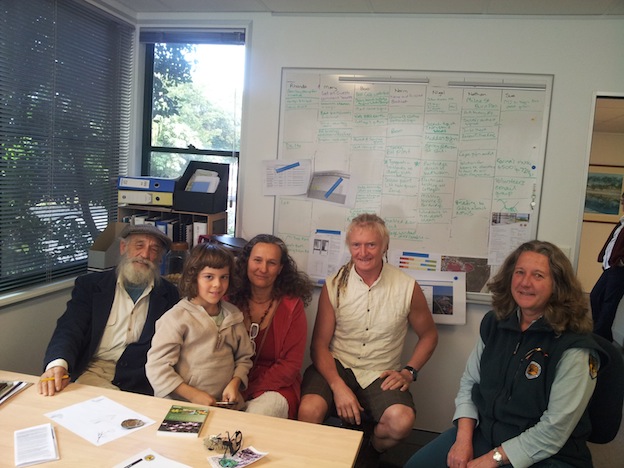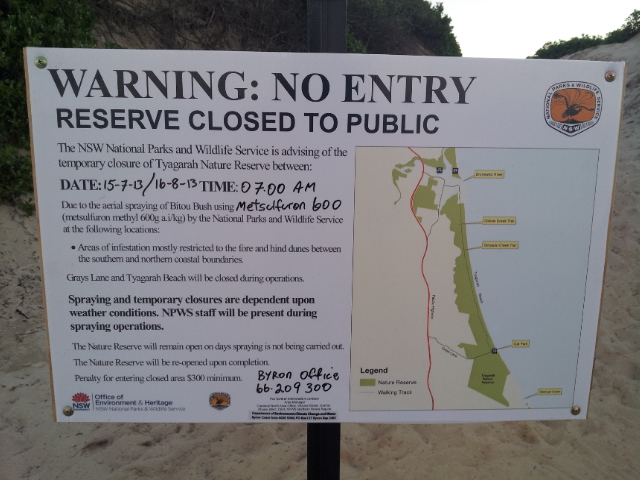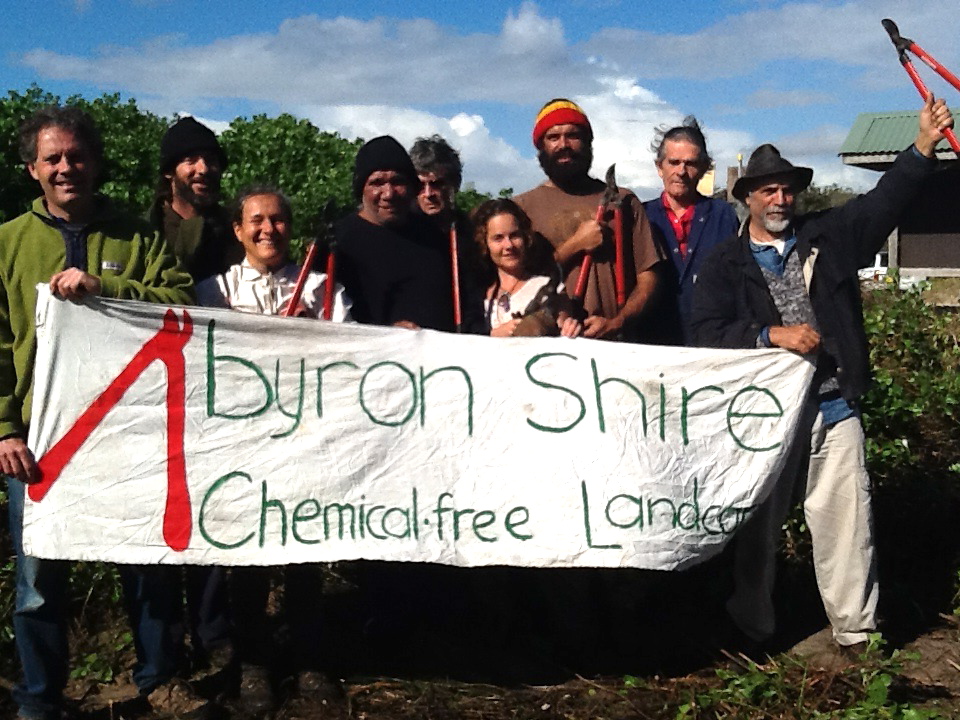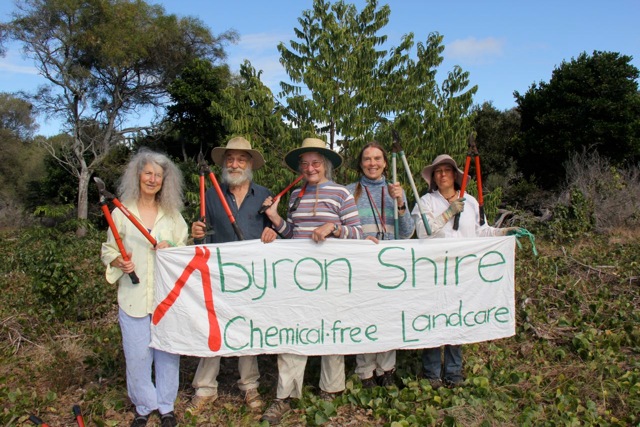To the National Parks Area Manager Byron Coast Area
Dear Sue Walker,
We would like to say thank you for meeting with us on the 12th of July regarding our proposal to implement the non-chemical ecological restoration method to remove Bitou Bush from Tyagarah Nature Reserve. Thank you also for following up with Yvonne Stewart as you committed to doing.
We hope this will be the first meeting in a long-term friendship between the Byron Shire Chemical Free Landcare and NPWS. We are 100% committed to healing the land, especially the soil ecology.
We are very disappointed with the outcomes of the meeting in terms of your decision to go ahead with the spraying of TNR and your answers to our key questions.
We also can’t understand why an indigenous elder would choose to poison the land, instead of accepting the kind hand of the community to implement a non-chemical methodology that works.
We’ve proven the technique works on the ground by clearing and following up 4 hectares of Bitou Bush, adjacent to the TNR northern boundary, over the past 3 years. We invite you and your staff to tour the site with us and we can explain the process and you can see the results.
We only work a few hours, every second Saturday, with an average of 4 to 6 people. As we work with the land we are developing a deep relationship with the country. It’s so special it makes us want to share and spread the experience.
New people are all always coming and going, however many hands make the work light. We are especially delighted with the increase of young people coming to help. They say they want to care for the land, but they don’t want to carry a spray pack on their backs.
So as we come towards the end of our site’s primary work, only ½ hectare to go which we will finish probably by next winter, our intentions are to head south, towards Byron, working on Tyagarah Nature Reserve.
We would like to share with NPWS a vision to apply for grants focusing on employing local young people with bush regeneration TAFE qualifications to help do the work. It would be so beneficial to create an employment opportunity for local youth instead of pushing them away from the environment field, because they don’t want to use pesticides.
Beekeepers rely on Tyagarah Nature Reserve and the proposed NPWS aerial spraying operation is causing a great disturbance to their business. They are our local apiarists like the “Honey Wagon”, Gary Rodger, who has had to remove his bees from the area. Locals don’t want honey with pesticide residues. Our methods would not disturb the livelihoods of our beekeepers.
TNR is in need of greater community presence. Women are too afraid to even go there alone as you’ve probably heard. It would be so beneficial for us to be working there bringing families and love for the country into this place. It has already had so much disturbance, mining, exotic species, now pesticides to control Bitou Bush. So when does the healing start?
As you are probably aware, mayor Simon Richard, is pushing for a drastic reduction in the use of pesticides in the Shire. You may have also seen the program on ABC TV, 4 Corners – Chemical Time Bomb – a very disturbing story. How can you be assured the pesticide you are proposing to put all over our coastline is not contaminated with dangerous chemicals like dioxins?
There are many people in this community that are concerned and opposed to the aerial spraying and pesticide-intensive management of Bitou, so this is a great opportunity for NPWS to hear the community and negotiate for healing, not further conflict.
We will be persistent on this matter as our intentions come from a place of deep respect and care for the country. We believe we have already compromised enough. NPWS has already sprayed Broken Heads, the Light House, Tallow Beach and Billinudgel Nature Reserve.
What we ask is for NPWS to compromise on one area where we can once again demonstrate the approach. It doesn’t matter how hard I look, I can’t find evidence of the safety of this pesticide, especially in terms of its residual in sandy soil and near water, as both facts are stated on the profile description as not recommended.
Also as the profile description of metsulfuron methyl says, it is designed to kill tubers and bulbs. So any one that says it will not impact the threatened pink nodding orchid and other native tubers, is really only speculating.
We don’t have a written proposal at present, however we could provide it in the near future. Also our site can speak for itself and in a few months our second data report will be ready and we can share the result of our 4 x 100 m plots for work progress and 2 plots 2×4 m of glory lily research.
In conclusion, as NPWS is aware, the Bitou bush non-chemical crowning technique is recognized as efficient under the Bitou Bush TAP. We would like to ask what evidence or reason that NPWS have to suggest that the aerial spraying is preferable to the manual control offered by BSCFL and why aren’t you considering this as an effective and efficient option? What are the concerns and reasons for the refusal of our proposal?
With kind regards,
Nadia de Souza Pietramale
www.byronshirechemicalfreelandcare.org




